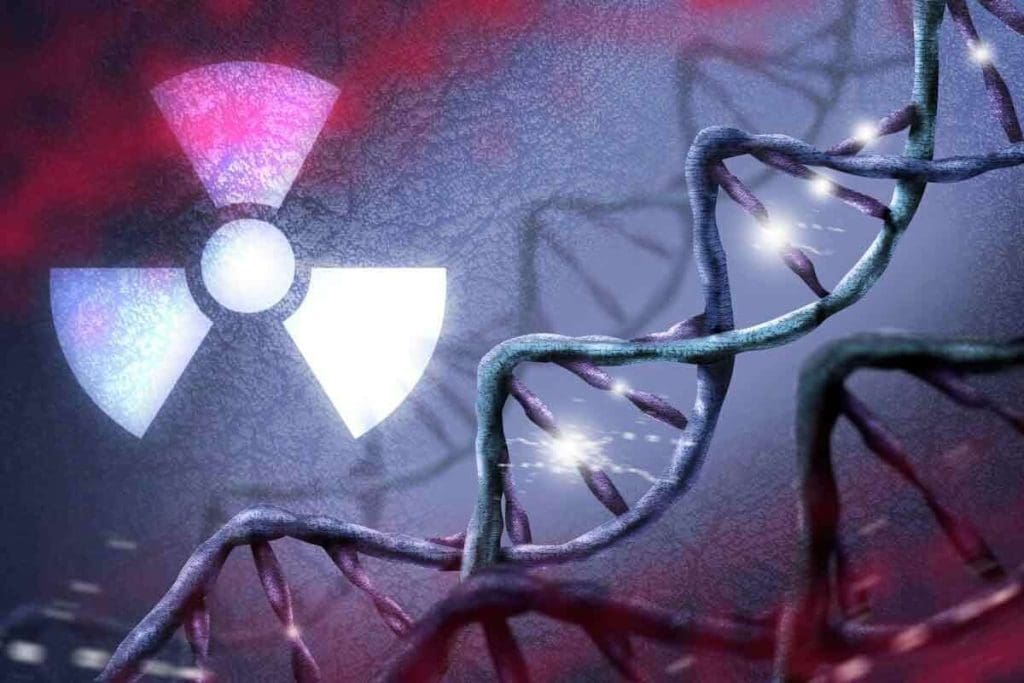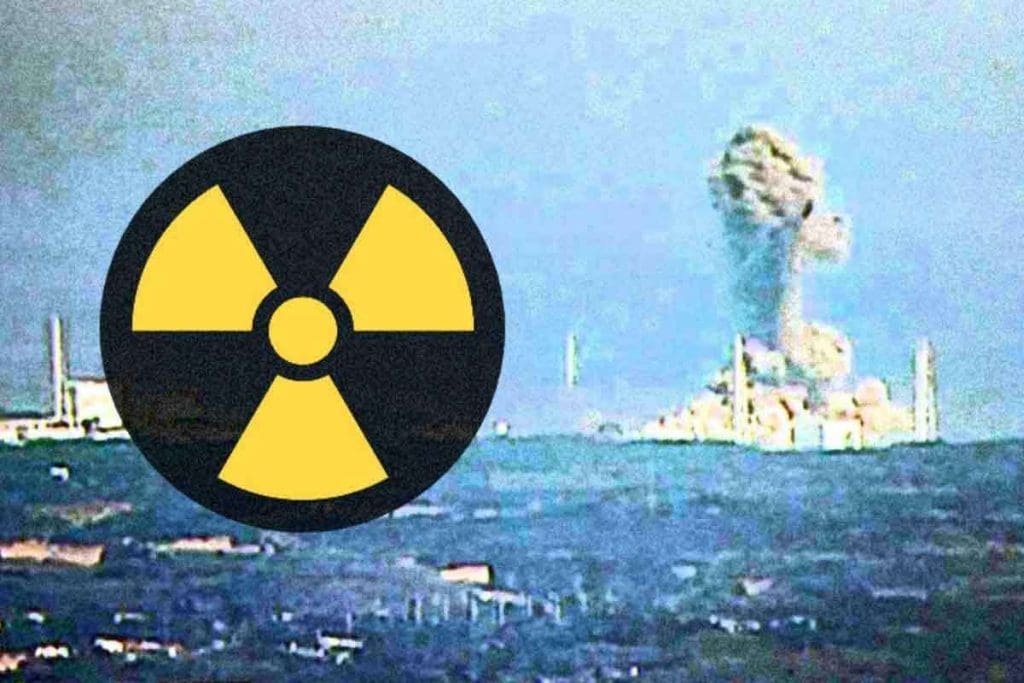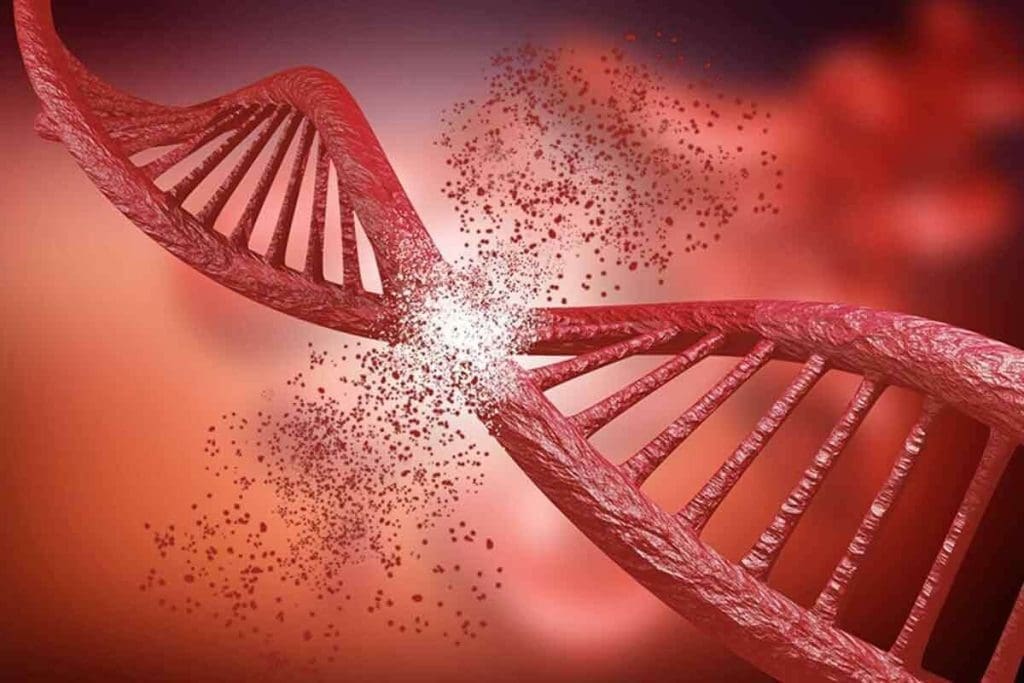Last Updated on November 27, 2025 by Bilal Hasdemir

In today’s world, knowing about radiation exposure is key. At Liv Hospital, we stress the need to grasp how nuclear radiation impacts our health.
Ionizing radiation can lead to serious sickness by lowering blood cell counts and harming the digestive system. High doses can also affect the heart, blood vessels, brain, and skin. It’s vital to know these risks to keep exposure low and protect patients.Discover radioactivity effects on the body and how different exposure levels can affect organs, tissues, and long-term health.
Key Takeaways
- Radiation exposure poses significant health risks, including acute radiation syndrome and cancer.
- Ionizing radiation can damage vital organs and systems.
- Understanding radiation exposure is critical for patient safety.
- Minimizing exposure risks is essential in medical settings.
- Liv Hospital prioritizes patient-centered care in managing radiation health problems.
The Science Behind Radiation and Human Health

To understand the dangers of radiation, we need to know the science behind it. Radiation is a form of energy from different sources. It can deeply affect our bodies.
“Radiation is not just a modern worry; it’s been around forever,” say experts. Ionizing radiation is a high-energy type. It can remove electrons from atoms, causing damage in living tissues.
Types of Ionizing Radiation and Their Sources
Ionizing radiation includes alpha, beta, gamma, and X-ray types. Each has its own properties and sources. For example, alpha radiation comes from heavy elements like uranium and radon. Gamma radiation is linked to nuclear reactions and radioactive decay.
Ionizing radiation sources are many. They range from natural background radiation to man-made sources like medical devices and nuclear plants. Knowing these sources helps us manage radiation exposure.
How Radiation Measurement Works
Measuring radiation is key to understanding exposure levels and health risks. Radiation dose is measured in sieverts (Sv) or millisieverts (mSv). These units show the biological effect of radiation.
Tools like Geiger counters and dosimeters help measure radiation. Advanced methods like spectrometry can also tell us about radiation types and energy. This gives us detailed info about our radiation environment.
Accurate radiation measurement is vital for safety and protection. Knowing how much radiation we’re exposed to helps us reduce risks. It keeps our health safe.
“The key to radiation safety lies in understanding the sources and levels of exposure, and then taking appropriate measures to mitigate those risks.”
Radioactivity Effects on the Body: Cellular and DNA Damage

Radioactivity can harm the human body by changing the chemistry of atoms and molecules. Ionizing radiation can remove tightly bound electrons from atoms, creating ions. This disrupts cell function and can cause health problems.
Mechanisms of Radiation-Induced Cell Damage
Ionizing radiation can damage DNA in cells when it interacts with the body. This damage can happen directly or through free radicals. The damage’s extent depends on the radiation dose, type, and exposed organs. A study on PMC highlights the importance of understanding this damage.
There are two main types of radiation-induced cell damage: direct and indirect. Direct damage happens when radiation directly hits DNA, causing DNA strand breaks. Indirect damage occurs when radiation creates free radicals in water molecules, which then damage DNA.
Cellular Repair Mechanisms and Their Limitations
Cells have ways to fix DNA damage from radiation. These include base excision repair, nucleotide excision repair, and double-strand break repair. But these mechanisms are not perfect and can fail with high radiation doses or genetic issues.
The limits of these repair mechanisms can lead to health issues like cancer and genetic mutations. Knowing these limits helps in finding ways to reduce radiation effects.
| Repair Mechanism | Description | Limitations |
| Base Excision Repair | Repairs damage to individual DNA bases | Can be impaired by genetic mutations |
| Nucleotide Excision Repair | Repairs larger DNA lesions | Can be overwhelmed by high doses of radiation |
| Double-Strand Break Repair | Repairs breaks in both strands of DNA | Errors can lead to genetic mutations |
Danger #1: Acute Radiation Syndrome
Acute Radiation Syndrome (ARS) is a serious condition caused by too much ionizing radiation. It can harm the bone marrow, lungs, and other important organs. This happens when the body gets a big dose of radiation quickly.
Stages and Symptoms of Radiation Sickness
ARS goes through several stages. The first stage is the prodromal phase. Here, you might feel nausea, vomiting, diarrhea, and tiredness.
Then, the latent phase comes. It looks like you’re getting better, but you’re not. After that, the manifest illness stage starts. This is when symptoms get worse and can cause organ failure.
The severity of ARS depends on the radiation dose. The more radiation you get, the worse the symptoms. Knowing these stages helps doctors treat ARS better.
Dose-Dependent Effects and Survival Rates
ARS’s impact on the body depends on the radiation dose. Getting more than 0.75 Gy can cause ARS. Higher doses mean more severe symptoms and lower chances of survival.
| Radiation Dose (Gy) | Symptoms and Effects | Survival Rate |
| 0.75-1.25 | Mild to moderate symptoms, mainly bone marrow issues | High |
| 1.25-2.0 | Moderate to severe bone marrow problems | Moderate |
| 2.0-4.0 | Severe bone marrow issues, stomach problems start | Low |
| 4.0-6.0 | Severe stomach and bone marrow symptoms | Very Low |
| >6.0 | Many organs fail, very severe symptoms | Extremely Low |
It’s important for doctors and people to know how ARS works. This knowledge helps in treating ARS and understanding radiation risks.
Danger #2: Increased Cancer Risk
Ionizing radiation can lead to more cancers. This is a big worry for people exposed to it. It can happen through medical tests, work, or pollution.
Most Common Radiation-Induced Cancers
Studies show ionizing radiation raises cancer risk. The main cancers linked to it are:
- Leukemia: A blood and bone marrow cancer often caused by radiation.
- Thyroid Cancer: Kids exposed to radiation are at higher risk for this cancer.
- Breast Cancer: Women, young or old, face a higher breast cancer risk from radiation.
- Lung Cancer: Radiation increases lung cancer risk, worse for smokers.
The National Cancer Institute says, “Ionizing radiation can damage DNA, leading to cancer.” This damage can cause different cancers, based on the dose and how long you’re exposed.
Latency Periods and Lifetime Risk Calculations
The time between radiation and cancer can be long, from years to decades. This makes it hard to link radiation to cancer in people.
Lifetime risk calculations predict cancer chances from radiation. They consider the radiation dose, age, and type of radiation.
“Understanding radiation risks is key to protecting public health and reducing these dangers.”
We need to think about these factors when looking at radiation risks. And when setting safe exposure limits.
Danger #3: Cardiovascular Diseases and Heart Damage
Ionizing radiation can harm the heart and raise the risk of heart diseases. This is a big worry for people exposed to a lot of radiation. This could be from medical treatments, work, or nuclear accidents.
Radiation-Induced Heart Disease Mechanisms
Radiation can damage the heart’s blood vessels and muscle cells. The vascular endothelium is key to blood vessel health. Damage here can cause atherosclerosis and other heart problems. Cardiac myocytes are heart muscle cells that help the heart pump. Damage to these cells can lead to heart failure.
The damage from radiation to the heart is complex. It involves inflammation, scarring, and blood vessel problems. These effects can show up months or years after exposure. So, it’s important to keep an eye on people at risk over time.
Long-Term Cardiovascular Risks After Exposure
People exposed to a lot of radiation face a big heart risk. They might get coronary artery disease, heart failure, and other heart problems. The risk goes up with the dose of radiation.
Doctors need to watch closely those who have been exposed to a lot of radiation. They should do regular heart checks and manage risk factors like high blood pressure and diabetes.
Knowing how radiation affects the heart helps us care for those at risk. This knowledge is key to improving their health in the long run.
Danger #4: Reproductive System Damage
Ionizing radiation can harm reproductive health, affecting fertility and pregnancy. The reproductive system is very sensitive to radiation. This can cause lasting damage to fertility in both men and women.
Effects on Male Fertility and Reproductive Organs
Radiation can harm male fertility by damaging the testes and sperm. High doses can cause temporary or permanent sterility. The damage depends on the dose and how fast it’s received.
Studies have shown that radiation can cause:
- Reduced sperm count
- Decreased sperm motility
- Increased sperm abnormalities
These effects can be temporary or permanent, depending on the dose.
Effects on Female Fertility and Reproductive Organs
In women, radiation can damage the ovaries, leading to premature ovarian failure or early menopause. The risk of infertility goes up with higher doses of radiation.
| Radiation Dose (Gy) | Effect on Female Fertility |
| 0.2-0.5 | Temporary amenorrhea |
| 2-5 | Permanent infertility likely |
| >5 | High risk of premature ovarian failure |
Radiation therapy to the pelvic area can also increase the risk of complications during pregnancy. These include miscarriage and premature birth.
Pregnancy Complications After Radiation Exposure
Women exposed to radiation may face higher risks during pregnancy. These risks include:
- Miscarriage
- Preterm labor
- Low birth weight
- Birth defects
It’s important for individuals exposed to radiation to talk to healthcare professionals. They can offer personalized advice and monitoring to reduce these risks.
We know that radiation exposure is a big worry for those planning to start a family. Our team is dedicated to providing full care and support to address these concerns.
Danger #5: Genetic and Hereditary Effects
Radiation can cause genetic damage that lasts for generations. Ionizing radiation can change DNA in reproductive cells, leading to mutations. These changes can affect not just the person exposed but also their children.
Radiation can alter DNA in reproductive cells, causing mutations. These mutations can then be passed on to future generations. This is known as transgenerational genetic damage.
Transgenerational Genetic Damage
Transgenerational genetic damage means genetic changes from radiation exposure passed to future generations. Studies show that ionizing radiation can increase genetic mutations in offspring.
The process behind this involves complex biology. When reproductive cells are hit by radiation, DNA damage can happen. Sometimes, this damage is not fully fixed, leading to mutations. These mutations can then be passed on to offspring.
Key aspects of transgenerational genetic damage include:
- Genetic mutations caused by radiation exposure
- Increased risk of hereditary disorders
- Potential for long-term genetic health consequences
Birth Defects and Developmental Issues
Radiation during pregnancy can cause birth defects and developmental issues. The severity and likelihood depend on the dose and timing of exposure.
Possible birth defects and developmental issues from radiation include:
- Microcephaly and other developmental abnormalities
- Increased risk of childhood cancers
- Growth and developmental delays
Pregnant individuals should avoid radiation exposure to reduce risks. If exposure is unavoidable, monitoring and medical guidance are key.
Understanding the genetic and hereditary effects of radiation is critical for health risk assessment. By recognizing these dangers, we can protect ourselves and future generations from ionizing radiation’s harm.
Danger #6: Neurological and Cognitive Impairment
Ionizing radiation can harm brain tissue, causing long-term cognitive and neurological issues. This sixth danger of radiation exposure highlights the brain’s vulnerability.
Brain Tissue Damage Mechanisms
Radiation can damage brain tissue through inflammation and oxidative stress. When ionizing radiation hits the brain, it can start an inflammatory response. This response can harm the brain’s delicate structures, leading to long-term neurological problems.
Oxidative stress is another way radiation harms brain tissue. Ionizing radiation can create reactive oxygen species (ROS) that damage cells. This damage can kill cells or make them work poorly. In the brain, where cells are very sensitive, this can severely affect thinking and memory.
Cognitive Decline and Memory Issues
Radiation damage to brain tissue can lead to cognitive decline and memory problems. People exposed to a lot of ionizing radiation might struggle with focus, memory, and other thinking skills. These effects are more common in those who have been exposed to high doses, like in nuclear accidents or radiation therapy.
Studies show that cognitive decline from radiation can happen years or decades after exposure. This delayed effect highlights the need for long-term monitoring of those exposed to radiation.
Understanding how radiation affects the brain is key to finding ways to prevent these problems. By studying the relationship between radiation and brain health, we can help those at risk and work to lessen the long-term effects of radiation.
Danger #7: Hematopoietic System Failure
Exposure to radiation can harm the hematopoietic system, leading to serious health problems. This system is key for making blood cells. Ionizing radiation can damage it, causing issues in the bone marrow.
Bone Marrow Suppression
Bone marrow suppression is a major effect of radiation on the hematopoietic system. The bone marrow makes red and white blood cells and platelets. Damage to it can cause anemia, infections, and bleeding problems.
Effects of Bone Marrow Suppression:
- Reduced red blood cell count leading to anemia
- Decreased white blood cell count increases the risk of infections
- Lower platelet count resulting in bleeding disorders
Immune System Compromise
The immune system works closely with the hematopoietic system. White blood cells are key to fighting off infections. Damage to the bone marrow can weaken the immune system, making it harder to fight off infections.
| Dose of Radiation (Gy) | Effect on Bone Marrow | Immune System Impact |
| 0-1 | Mild suppression, potentially reversible | Minimal impact |
| 1-2 | Moderate suppression, some recovery possible | Moderate immune compromise |
| 2-4 | Severe suppression, significant risk of death | Severe immune compromise |
In conclusion, radiation can cause serious problems with the hematopoietic system. This can lead to bone marrow suppression and weaken the immune system. It’s important to understand these risks to find ways to treat and prevent these dangers.
Danger #8: Gastrointestinal Tract Damage
Ionizing radiation can harm the gastrointestinal system. It can cause intestinal injury and malabsorption. The damage’s severity depends on the radiation dose and rate.
Radiation can damage the intestines’ lining. This can lead to diarrhea, nausea, and vomiting. These symptoms can cause dehydration and malnutrition if not treated.
Radiation-Induced Intestinal Injury
Radiation can damage the intestines’ cells. This can cause inflammation, bleeding, and serious complications. The intestines are very sensitive to radiation because they have a high cell turnover rate.
For more information on radiation health effects, we recommend visiting the Canadian Nuclear Safety Commission’s resources on.
Malabsorption and Nutritional Consequences
Malabsorption is a big problem from radiation damage. When the intestines are hurt, the body can’t absorb nutrients well. This can cause malnutrition, weight loss, and other health issues.
The table below summarizes the effects of radiation on the gastrointestinal tract:
| Radiation Dose (Gy) | Gastrointestinal Symptoms | Nutritional Consequences |
| 0-1 | Mild nausea, vomiting | Minimal nutritional impact |
| 1-2 | Moderate nausea, vomiting, diarrhea | Some malabsorption |
| 2-5 | Severe nausea, vomiting, diarrhea, bleeding | Significant malabsorption, malnutrition |
In conclusion, damage to the gastrointestinal tract is a serious risk from radiation. It’s important to understand how radiation affects the gut. This knowledge helps in reducing risks and providing the right medical care.
Danger #9: Skin Burns and Tissue Necrosis
Radiation can cause severe skin burns and tissue necrosis. This is a big worry for those exposed to high levels of ionizing radiation. We look at how radiation affects the skin, including the stages of radiation dermatitis and healing issues.
Stages of Radiation Dermatitis
Radiation dermatitis is a common side effect of radiation. It shows in different stages based on the dose. The condition can range from mild redness to severe ulcers.
- Early Stage: Symptoms start with redness and irritation, like sunburn.
- Intermediate Stage: With higher doses, dry desquamation happens, causing skin to peel.
- Advanced Stage: At the highest doses, moist desquamation occurs, with blisters and open sores.
Knowing these stages helps manage radiation dermatitis better. It also helps lessen its effects on patients.
Wound Healing Complications
Wound healing issues are a big worry with severe radiation dermatitis. The damage to skin and tissues can slow healing.
- Impaired blood supply from radiation damage to blood vessels.
- Higher risk of infection in damaged tissues.
- Delayed healing, which can lead to chronic wounds.
When treating patients with radiation-induced skin injuries, we must consider these complications. Specialized care is needed to help healing and avoid more problems.
In summary, skin burns and tissue necrosis from radiation are serious health risks. Understanding radiation dermatitis stages and healing complications helps us manage these issues better. This improves patient outcomes.
Danger #10: Cataracts and Ocular Damage
Ionizing radiation can harm the eyes, causing cataracts. Cataracts cloud the lens, making it hard to see. We’ll look at how radiation leads to cataracts and other eye problems.
Mechanisms of Radiation-Induced Lens Opacity
The eye’s lens is very sensitive to radiation. Ionizing radiation can hurt the lens cells, causing them to become cloudy. This leads to cataracts. The more radiation you get, the higher your risk of cataracts.
Several things can affect your risk of getting radiation cataracts:
- Radiation dose: More radiation means a higher risk.
- Radiation type: Ionizing radiation, like gamma rays and X-rays, is a big risk.
- Exposure duration: Longer exposure times raise your risk of cataracts.
Other Ocular Structures at Risk
Other parts of the eye can also get hurt by radiation. These include:
- The retina, which can get damaged and cause vision loss.
- The cornea, which might get ulcers or keratitis from radiation.
- The optic nerve, which can get hurt and affect your vision.
It’s important to know about these risks if you’ve been exposed to radiation. Whether it’s for work or medical reasons, taking care of your eyes is key. Regular eye checks can help catch problems early.
Conclusion: Radiation Safety in the Modern World
Radiation exposure can lead to serious health issues like cancer and genetic damage. The harm it causes depends on how much and for how long you’re exposed. It’s vital to know about radiation safety and how to lower your exposure.
In today’s world, we face radiation from many sources, like medical scans and industrial uses. These technologies are helpful but need careful handling to avoid health risks. We should all learn about radiation risks and how to protect ourselves and others.
Liv Hospital focuses on safe medical care and radiation safety. By understanding the risks and acting early, we can lessen the harm from radiation. Keeping informed and teaching others about radiation safety is key to a safer world.
FAQ
What is radiation and why is it dangerous?
Radiation is a form of energy from sources like nuclear reactions and X-ray machines. It’s dangerous because it can harm living cells. This can lead to health issues like cancer and genetic damage.
What are the effects of radiation exposure on the human body?
Radiation exposure can cause different effects on the body. These range from mild symptoms like nausea to severe conditions like cancer and death. The severity depends on the dose and how long you’re exposed.
What is acute radiation syndrome?
Acute radiation syndrome (ARS) is a serious condition from high radiation exposure. Symptoms include nausea, vomiting, and damage to organs. It can be life-threatening.
How does radiation exposure increase the risk of cancer?
Radiation can damage DNA in cells, leading to cancer. The risk of cancer varies based on the dose, how long you’re exposed, and your age. Genetic factors also play a role.
What are the cardiovascular risks associated with radiation exposure?
Radiation can harm the heart and blood vessels. This increases the risk of heart disease and stroke. It can also lead to heart failure.
Can radiation exposure affect fertility and reproductive health?
Yes, radiation can harm fertility and reproductive health. It can damage reproductive organs, causing infertility and birth defects. This affects both men and women.
What are the genetic and hereditary effects of radiation exposure?
Radiation can cause genetic damage passed to future generations. This can lead to birth defects and developmental issues.
How can radiation exposure affect the brain and cognitive function?
Radiation can damage brain tissue. This can cause memory loss and other neurological problems. It can also lead to cognitive decline.
What is the impact of radiation exposure on the hematopoietic system?
Radiation can suppress bone marrow. This reduces blood cells, increasing the risk of infections and bleeding disorders.
How does radiation exposure affect the gastrointestinal tract?
Radiation can damage the intestinal lining. This can cause malabsorption and other gastrointestinal problems like diarrhea.
What are the risks of skin burns and tissue necrosis from radiation exposure?
Radiation can cause skin burns and tissue necrosis. This can lead to wound healing issues and long-term damage.
Can radiation exposure cause cataracts and ocular damage?
Yes, radiation can cause cataracts and damage to the eyes. This can result in vision loss and other eye problems.
What are the long-term health risks associated with low-level radiation exposure?
Low-level radiation exposure may increase the risk of cancer and other health problems. The exact risks are being studied.
How can radiation exposure be minimized or prevented?
To minimize radiation exposure, follow safety protocols and use protective gear. Limit exposure time, which is critical for those working with radiation or undergoing radiation procedures.
Reference
- World Health Organization. (2023). Ionizing radiation and health effects.https://www.who.int/news-room/fact-sheets/detail/ionizing-radiation-and-health-effectsThis fact sheet explains how ionizing radiation can damage tissues and organs depending on dose and tissue sensitivity, causing acute effects like radiation burns and chronic effects such as cancer and cataracts.






